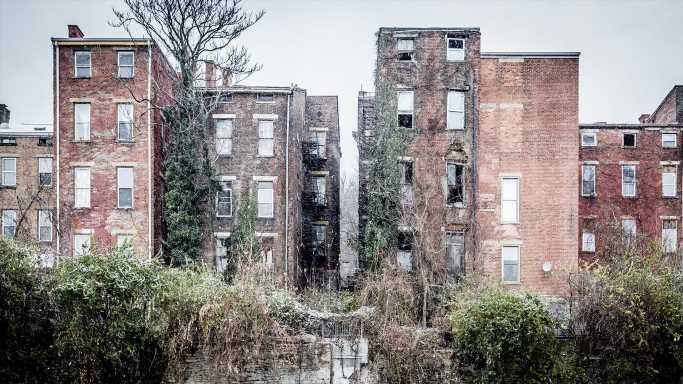The United States housing market has been in the middle of a housing crunch for some time now. Between 2012 and 2022 there were 6.5 million more new households formed than homes built. Even after including multi-family units, the gap between housing units and households is 2.3 million. As the number of available homes has shrunk, prices have skyrocketed, and prospective homeowners have been forced into extreme bidding wars for properties. However, despite the general trend of a major shortage of housing in some markets, there are an estimated 1.3 million single-family homes currently sitting vacant across the country.
There are different reasons and explanations for why homes sit vacant during a housing crunch. Some of these homes are investment properties, like rental units that landlords are struggling to fill or homes that may eventually be put up for sale. In other cases, homes are simply abandoned, and the owners are either unable or unwilling to sell them.
After falling for three consecutive quarters, the national vacancy rate stands at 1.26% of all homes as of Q4 of 2022. Still, there are dozens of neighborhoods across the U.S. where vacancy rates are many times higher than the national rate – America’s ghost towns. The areas where many homes are unoccupied are also often not those in high demand.
To identify America’s 25 ghost towns, 24/7 Wall St. reviewed a report about vacancy rates from ATTOM Data Solutions, a real estate information company. The report calculated vacancy rates in the fourth quarter of 2022 in each of the 6,515 U.S. ZIP codes with at least 1,000 housing units using tax assessor data. ZIP codes in popular vacation destinations, where high vacancy rates are largely seasonal, were excluded from our analysis. We ranked here the 25 ZIP codes with the highest share of homes that are vacant.
Among the ZIP codes on this list, the share of homes sitting vacant ranges from 17.4% to over 34%. The vast majority of the ZIP codes on this list are in the Midwest, located in or around cities that have suffered for decades from economic decline. These Rust Belt communities have seen their once vibrant manufacturing sectors all but collapse and are now left with little economic opportunity and depressed real estate markets.
Based on five-year estimates from the U.S. Census Bureau’s American Community survey, all but six of the neighborhoods on this list reported population decline from 2015 to 2020. In 10 of these ZIP codes, populations have fallen by over 10% over that period. (Here is a look at the cities Americans are abandoning.)
With high vacancy rates, population decline, and limited job opportunities, home values in these areas are low. In 23 of the 25 ghost towns on this list, the typical home is worth less than $100,000, and in 12, the median home value is below $50,000. For context, the typical home nationwide is worth $229,800, according to five-year estimates from the ACS. (Here is a look at the cities with the most homes people shouldn’t live in.)
Click here to see America’s ghost towns.
Sponsored: Tips for Investing
A financial advisor can help you understand the advantages and disadvantages of investment properties. Finding a qualified financial advisor doesn’t have to be hard. SmartAsset’s free tool matches you with up to three financial advisors who serve your area, and you can interview your advisor matches at no cost to decide which one is right for you. If you’re ready to find an advisor who can help you achieve your financial goals, get started now.
Investing in real estate can diversify your portfolio. But expanding your horizons may add additional costs. If you’re an investor looking to minimize expenses, consider checking out online brokerages. They often offer low investment fees, helping you maximize your profit.
Source: Read Full Article
-
Why Must Mark and Musk Be So Macho?
-
FDA Approves Bluebird Bio’s Gene Therapy For Rare Blood Disease
-
Developer planning apartments pays $12M for corner in Denver’s Capitol Hill
-
SAG-AFTRA & Studio CEOs Start Talks Today With Revenue Sharing Still Divisive Issue; “Be Cautious” Expecting A Quick Deal, Town Warned
-
This is the State With the Most Civil War Troops

